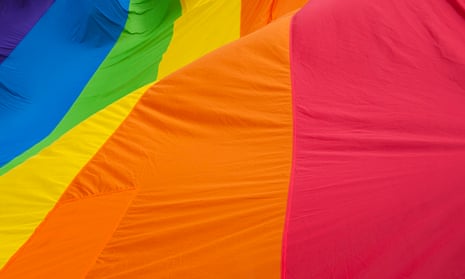As part of our Diversity Week in March 2013, Gary Everett, founder of Merseyside’s first publicly-funded lesbian, gay, bisexual and transgender (LGBT) arts festival, Homotopia, blogged about the issue of diversity in arts and culture. He championed the power of works such as Paul Harfleet’s Pansy Project to bring communities closer together and give confidence to young LGBT people. “Our projects are true catalysts for engagement and social change,” he wrote; social justice work gives arts organisations the chance to make emotional connections that affect local communities and society as a whole.
But what about beyond the work? What about the organisations that commission, programme and stage these projects? What about the LGBT communities and employees who work in the four walls of our galleries, museums, theatres and arts centres? As Everett wrote: “It’s vital that more LGBT cultural representation is seen in theatres, public galleries, schools and museums. Many institutions across the UK still exclude or ignore opportunities to engage in what it means to be gay in the 21st century.” That means looking inside as well as out.
As one attendee at this year’s Un-Straight Museum conference in Liverpool put it: “Institutional racism has become a recognised term, but what about institutional homophobia? It needs ingraining into museum policy.” The two-day event, which explored the representation of diverse communities in cultural institutions, raised some interesting points about how much is being done voluntarily in some organisations when it comes to LGBT representation. Budget, training, terminology and audience development were all discussed as key stumbling blocks.
In a survey of Tate staff mentioned at the event, 10% of the 800-strong workforce belonged to the LGBTQ network. As another Un-Straight conference attendee explained: “It shouldn’t be a matter of LGBT groups within larger organisations having to pull out all the stops to put on LGBT events; it needs incorporating into the museums’ key performance indicators and audience development strategies.”
So what needs to change? How much support is there for LGBT employees and communities within large and small arts organisations? For our next live chat, we’re keeping it simple – a one-and-a-half hour webchat about a subject that is anything but: being LGBT in the arts.
Whether you’re on the frontline, in the back-room or an LGBT artist with a tale to tell, join us from 1pm on Wednesday 5 November to discuss being LGBT in the arts sector.
This live chat takes places in the comments section below.
Take part by logging in (or signing up) as a commenter and submit your question or query below. You can post something now for the panel to pick up on the day or join us live.
Panel
Kaite Welsh, LGBT editor of The List and chair, Green Carnation Prize for LGBT authors
Beverley Ayre, development director, Homotopia
Thomas Hescott, theatre director and a writer
Elinore Lindén Strand, project manager, The Unstraight Museum
Michele Bauer, executive producer, Left Bauer Productions
Michael Twaits, actor and cabaret artist
Holestar, entertainer, DJ and artist
Rubyyy Jones, performer, writer and producer
Alexander Luttley, performer/creator, Pi The Mime
Join our community of arts, culture and creative professionals by signing up free to the Guardian Culture Pros Network.

Comments (…)
Sign in or create your Guardian account to join the discussion